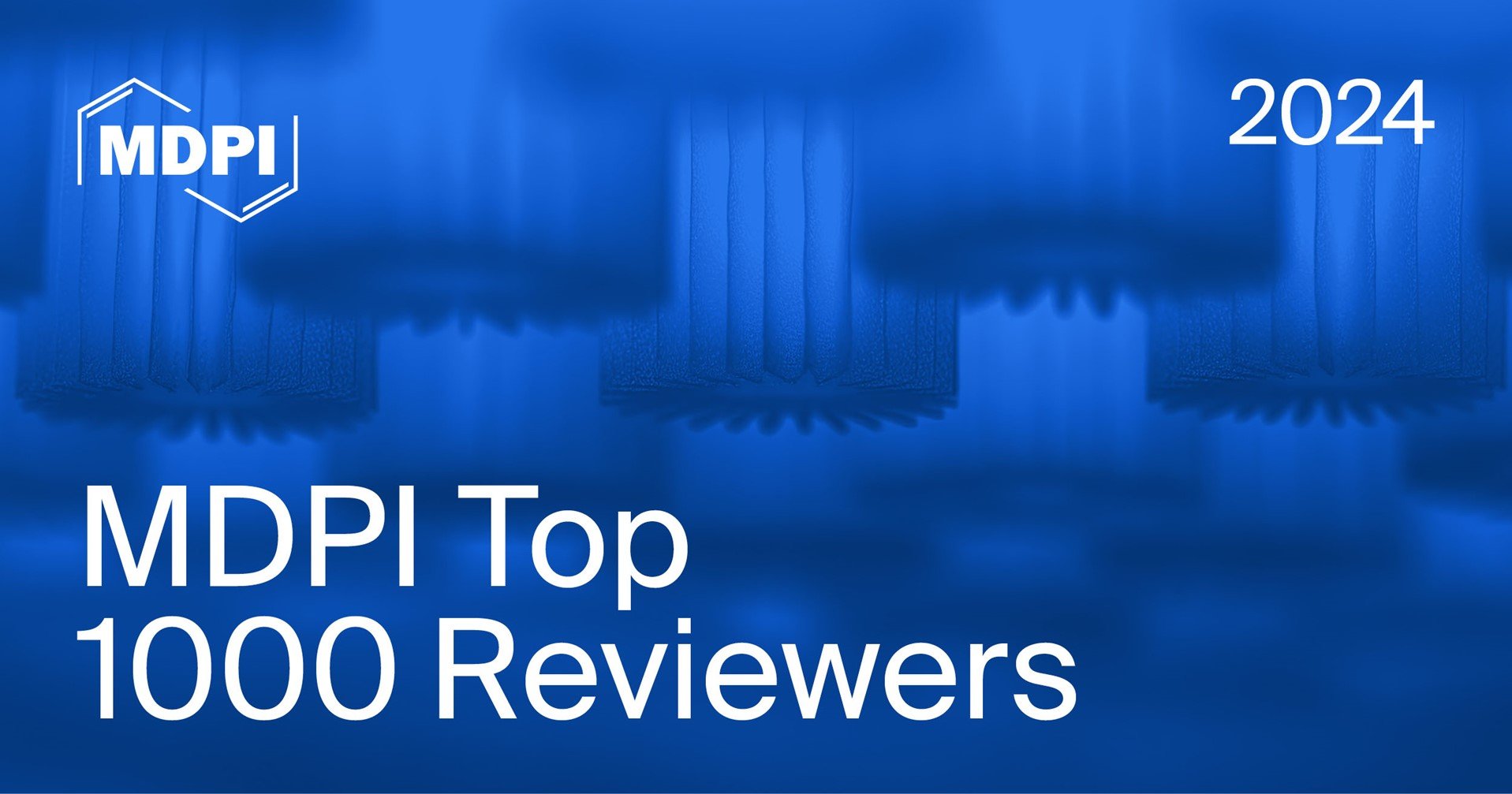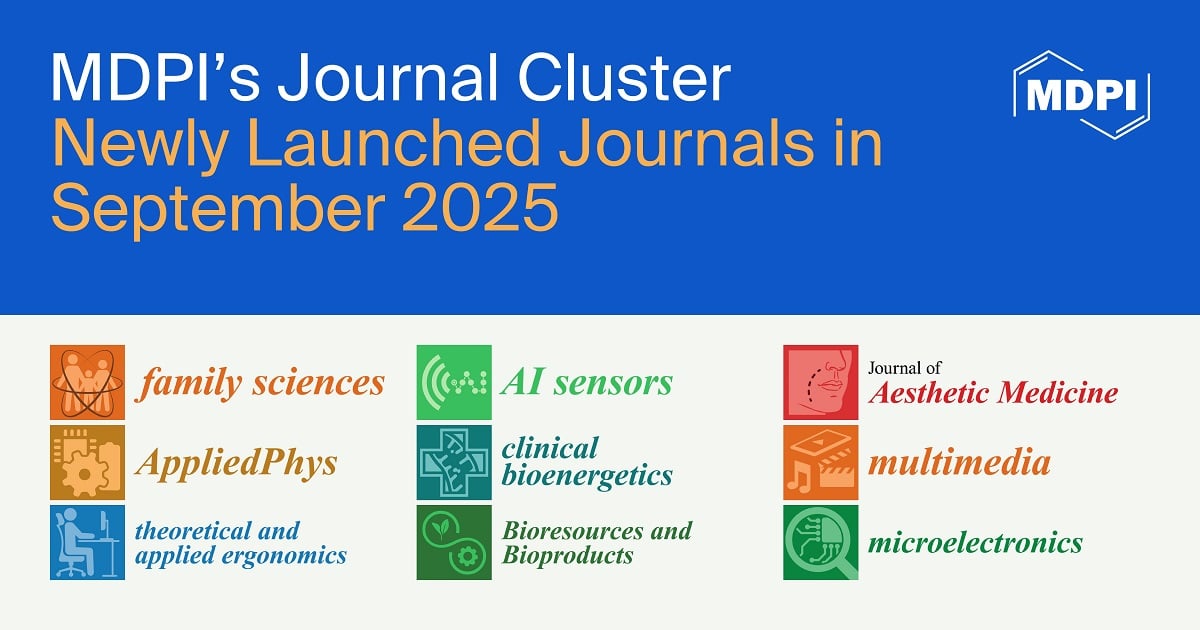Journal Description
Diagnostics
Diagnostics
is an international, peer-reviewed, open access journal on medical diagnosis published semimonthly online by MDPI. The British Neuro-Oncology Society (BNOS), the International Society for Infectious Diseases in Obstetrics and Gynaecology (ISIDOG) and the Swiss Union of Laboratory Medicine (SULM) are affiliated with Diagnostics and their members receive a discount on the article processing charges.
- Open Access— free for readers, with article processing charges (APC) paid by authors or their institutions.
- High Visibility: indexed within Scopus, SCIE (Web of Science), PubMed, PMC, Embase, Inspec, CAPlus / SciFinder, and other databases.
- Journal Rank: JCR - Q1 (Medicine, General and Internal) / CiteScore - Q2 (Internal Medicine)
- Rapid Publication: manuscripts are peer-reviewed and a first decision is provided to authors approximately 21 days after submission; acceptance to publication is undertaken in 2.6 days (median values for papers published in this journal in the first half of 2025).
- Recognition of Reviewers: reviewers who provide timely, thorough peer-review reports receive vouchers entitling them to a discount on the APC of their next publication in any MDPI journal, in appreciation of the work done.
- Companion journals for Diagnostics include: LabMed and AI in Medicine.
Impact Factor:
3.3 (2024);
5-Year Impact Factor:
3.3 (2024)
Latest Articles
The Evaluation of a Rapid Syndromic Multiplex Meningitis/Encephalitis RT-qPCR MX-17 Panel
Diagnostics 2025, 15(20), 2629; https://doi.org/10.3390/diagnostics15202629 - 17 Oct 2025
Abstract
Background/Objectives: Meningoencephalitis (ME) is a life-threatening infectious disease; therefore, prompt and accurate diagnosis is lifesaving. Traditional diagnostic methods, such as culture, have several limitations related to sensitivity and specificity. Emerging multiplex ME-PCR panels are a comprehensive and rapid tool in a single
[...] Read more.
Background/Objectives: Meningoencephalitis (ME) is a life-threatening infectious disease; therefore, prompt and accurate diagnosis is lifesaving. Traditional diagnostic methods, such as culture, have several limitations related to sensitivity and specificity. Emerging multiplex ME-PCR panels are a comprehensive and rapid tool in a single test. The Bio-Speedy Meningitis/Encephalitis RT-qPCR MX-17 panel (Bioeksen R&D Technologies Inc., Turkey) enables testing for 17 targets. To evaluate the performance of the panel compared to clinical and CSF parameters. Methods: A total of 403 patients with a preliminary diagnosis of ME were reviewed between January 2019 and September 2023. Following revision, 72 patients with clinical, CSF, and laboratory findings were included. The tested panel was used to detect targeted pathogens in CSF samples. The 30-day survival rate and prolonged stay were analyzed. Results: The median CSF protein value was 59.5 mg/dL (14.2–1471 mg/dL) and glucose was 61.95 mg/dL (0.083–165 mg/dL). Forty-one (56.9%) ME panel results were positive, among which 38.9% (28) were viral and 19.4% (14) were bacterial. HHV-6 ranked first with a rate of 15.3%. The Bio-Speedy panel test results outperformed the CSF culture (p < 0.001). The correlation of the Bio-Speedy panel with impaired consciousness was statistically significant (p = 0.004). Six (8.3%) patients from the study group died within 30 days. Conclusions: Compared to traditional methods, Bio-Speedy panel was effective in identifying the causative agents of ME. The Bio-Speedy ME RT-qPCR MX-17 panel offers accurate detection of ME-causing pathogens. The implementation of the panel in clinical practice can impact patient management and improve outcomes.
Full article
(This article belongs to the Special Issue Advances in the Diagnosis of Infectious Diseases and Microorganisms: 2nd Edition)
►
Show Figures
Open AccessArticle
The Importance of the Interventional Pathologist in Fine Needle Aspiration and Core Needle Biopsy Procedures for Lymph Node Lesions: A Retrospective Analysis of Diagnostic Correlation and Proposal of a Classification System for Node Core Needle Biopsies
by
Montserrat de la Torre Serrano, Ana María Colino-Gallardo, Jesús Vega González, Maria Reyes Bergillos Giménez, Ramón Robledano Soldevilla, Teresa Iscar Galán, Julian Sanz Ortega, Maria del Mar Olmo Fernández, Santiago Nieto Llanos and Karen Villar Zarra
Diagnostics 2025, 15(20), 2628; https://doi.org/10.3390/diagnostics15202628 - 17 Oct 2025
Abstract
Introduction: Pathology requires the integration of macroscopic and microscopic findings for an accurate diagnosis. Fine needle aspiration biopsy (FNA) traditionally became the domain of radiologists with the introduction of ultrasound; however, its increased accessibility has allowed other specialists, including pathologists, to incorporate
[...] Read more.
Introduction: Pathology requires the integration of macroscopic and microscopic findings for an accurate diagnosis. Fine needle aspiration biopsy (FNA) traditionally became the domain of radiologists with the introduction of ultrasound; however, its increased accessibility has allowed other specialists, including pathologists, to incorporate it into their daily practice. Both ultrasound-guided FNA and core needle biopsy (CNB) performed by interventional pathologists have proven valuable tools in the diagnosis of lymph node lesions. Materials and Methods: An observational, descriptive, retrospective study was conducted at Hospital Universitario del Henares, analysing 134 FNABs and 31 CNBs of lymph node lesions between 2023 and 2024. The diagnostic yield of both techniques and their correlation were evaluated. Results: Ultrasound facilitated better lesion characterization. FNA demonstrated a diagnostic yield of 98%, with a 94% correlation with CNB results. The Sydney system 2020 was applied to FNA reporting in lymphatic node. An equivalent classification system for CNB is proposed. Conclusion: The performance of FNA and CNB by pathologists optimizes diagnosis, reduces time and costs, and strengthens their role in minimally invasive diagnostics. Adoption of a unified classification system for CNB lesions would facilitate communication between specialists.
Full article
(This article belongs to the Section Pathology and Molecular Diagnostics)
►▼
Show Figures
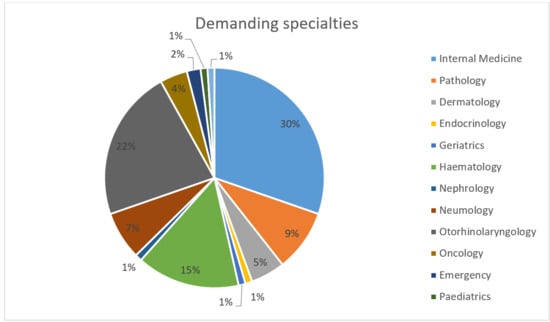
Figure 1
Open AccessArticle
Identifying Pathogenic Variants in Vietnamese Children with Functional Single Ventricle Based on Whole-Exome Sequencing
by
Le Trong Tu, Nguyen Thi Kim Lien, Nguyen Van Tung, Dang Thi Hai Van, Vu Quynh Nga, Nguyen Tat Tho, Nguyen Thanh Hien, Nguyen Minh Duc and Nguyen Huy Hoang
Diagnostics 2025, 15(20), 2627; https://doi.org/10.3390/diagnostics15202627 - 17 Oct 2025
Abstract
Background: Functional single ventricle (FSV) comprises a heterogeneous group of congenital heart diseases (CHDs) with severe and complex abnormalities. The multifactorial etiology of the disease poses challenges in identifying specific pathogenic factors and planning effective interventions and preventive treatments for patients. Methods: Whole-exome
[...] Read more.
Background: Functional single ventricle (FSV) comprises a heterogeneous group of congenital heart diseases (CHDs) with severe and complex abnormalities. The multifactorial etiology of the disease poses challenges in identifying specific pathogenic factors and planning effective interventions and preventive treatments for patients. Methods: Whole-exome sequencing (WES) was performed to identify variants in relevant genes in 29 FSV patients from different families. Results: In total, 95 heterozygous variants across 48 CHD-associated genes were identified, including 85 missense, four small indel, one splicing, one stop gain, and four synonymous variants. Among them, 22 were novels, 11 conflicting, and four pathogenic variants. Each patient carried from two to six variants in different genes, including at least one variant in genes associated with serious heart defects such as AXIN1, BMP2, COL6A2, GATA4, GATA5, GDF1, MESP1, MYH6, NFATC1, NKX2-6, NOTCH1, PCSK9, TBX1, TBX18, and TBX20. In addition, the variants in the COL6A1, CREBBP, DOCK6, EOGT, EP300, LRP2, MYBPC3, MYH7, SEMA3C, and ZFPM2 genes are associated with characteristic phenotypes of FSV, such as atrial septal defect, ventricular septal defect, small left heart syndrome, transposition of the great arteries, and double outlet right ventricle occurring at high frequency in patients. The prediction results suggest that these are potentially pathogenic variants in patients and may explain the phenotype in patients. Conclusions: This is the first study to identify variants associated with functional single ventricle, a complex form of congenital heart disease. Our results contribute to a general understanding of the causes of the disease, thereby guiding treatment and prevention approaches for patients.
Full article
(This article belongs to the Section Pathology and Molecular Diagnostics)
►▼
Show Figures
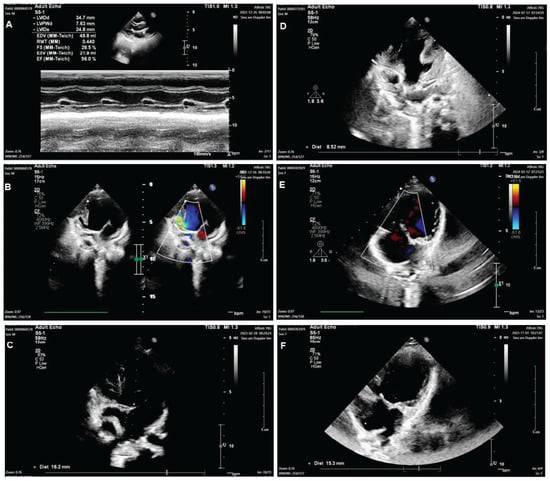
Figure 1
Open AccessArticle
Perceived Barriers to NGS-Based Molecular Profiling Among US Metastatic Breast Cancer Patients
by
Nicholas Cadirov, Moumita Chaki, Olivia Foroughi, Omar Perez, Stella Redpath and Gary Gustavsen
Diagnostics 2025, 15(20), 2626; https://doi.org/10.3390/diagnostics15202626 - 17 Oct 2025
Abstract
Background/Objectives: Next-generation sequencing (NGS)-based molecular profiling has revolutionized personalized medicine and unlocked new treatment options for cancer patients. Clinical guideline bodies agree that patients diagnosed with HR+/HER2− metastatic breast cancer (mBC) may benefit from comprehensive somatic genomic profiling to identify candidates for
[...] Read more.
Background/Objectives: Next-generation sequencing (NGS)-based molecular profiling has revolutionized personalized medicine and unlocked new treatment options for cancer patients. Clinical guideline bodies agree that patients diagnosed with HR+/HER2− metastatic breast cancer (mBC) may benefit from comprehensive somatic genomic profiling to identify candidates for established targeted therapies and clinical trials, yet many patients are not receiving it due to a lack of widespread access to NGS. Methods: To better understand the perceived barriers (if any) to NGS tests in mBC, a study was conducted across multiple stakeholders including medical oncologists, nurses, physician assistants, lab directors, pathologists, payers, and patients. Results: This study revealed that despite the awareness and recognition of the value proposition of NGS-based molecular profiling in mBC, inconsistent payer coverage, high out of pocket costs for patients, and challenges in managing reimbursement and prior authorization processes can lead to suboptimal utilization of NGS, which can subsequently lead to suboptimal treatment decisions where approved therapies exist. Interestingly, many payers (33%) were not aware of the current somatic biomarker testing recommendations from NCCN guidelines. As a result, payers identified the lack of clear clinical guidelines (74% ranked as top 3), the lack of internal consensus on which NGS tests to cover (45%), and the absence of internal expertise on NGS (39%) as the primary hurdles for broader NGS access. Conclusions: The results suggest that widespread HCP and payer education on clinical guidelines (e.g., NCCN) and utility for targeted therapy selection is crucial for enhanced adoption of NGS-based molecular profiling in mBC.
Full article
(This article belongs to the Special Issue Advances in the Diagnosis and Management of Breast Cancer)
►▼
Show Figures
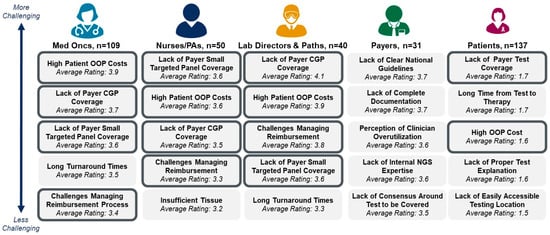
Figure 1
Open AccessReview
Optical Imaging Technologies and Clinical Applications in Gastrointestinal Endoscopy
by
Khyati Bidani, Vishali Moond, Madhvi Nagar, Arkady Broder and Nirav Thosani
Diagnostics 2025, 15(20), 2625; https://doi.org/10.3390/diagnostics15202625 - 17 Oct 2025
Abstract
Optical imaging technologies expand gastrointestinal endoscopy beyond white-light endoscopy (WLE), improving visualization of mucosal, vascular, and subsurface features. They are applied to the detection of neoplastic and premalignant lesions, inflammatory diseases, and small bowel and pancreatic disorders, though their validation and readiness for
[...] Read more.
Optical imaging technologies expand gastrointestinal endoscopy beyond white-light endoscopy (WLE), improving visualization of mucosal, vascular, and subsurface features. They are applied to the detection of neoplastic and premalignant lesions, inflammatory diseases, and small bowel and pancreatic disorders, though their validation and readiness for routine practice vary. This review critically evaluates both guideline-endorsed and investigational optical imaging techniques across major gastrointestinal indications, highlighting diagnostic performance, level of validation, current guideline recommendations, and practical challenges to adoption. In Barrett’s esophagus, narrow-band imaging (NBI) is guideline-endorsed, while acetic acid chromoendoscopy is validated in expert centers. For gastric intestinal metaplasia and early gastric cancer, magnifying NBI achieves diagnostic accuracies exceeding 90% and is guideline-recommended, with acetic acid chromoendoscopy aiding in margin delineation. In inflammatory bowel disease, dye-spray chromoendoscopy is the reference standard for dysplasia surveillance, with virtual methods such as NBI, FICE, and i-SCAN serving as practical alternatives when dye application is not feasible. In the colorectum, NBI supports validated optical diagnosis strategies (resect-and-discard, diagnose-and-leave), while dye-based chromoendoscopy improves detection of flat and serrated lesions. Capsule endoscopy remains the standard for small bowel evaluation of bleeding, Crohn’s disease, and tumors, with virtual enhancement, intelligent chromo capsule endoscopy, and AI-assisted interpretation emerging as promising adjuncts. Pancreaticobiliary applications of optical imaging are also advancing, though current evidence is still preliminary. Investigational modalities including confocal laser endomicroscopy, optical coherence tomography, autofluorescence, Raman spectroscopy, and fluorescence molecular imaging show potential but remain largely restricted to research or expert settings. Guideline-backed modalities such as NBI and dye-based chromoendoscopy are established for clinical practice and supported by robust evidence, whereas advanced techniques remain investigational. Future directions will rely on broader validation, integration of artificial intelligence, and adoption of molecularly targeted probes and next-generation capsule technologies, which together may enhance accuracy, efficiency, and standardization in gastrointestinal endoscopy.
Full article
(This article belongs to the Special Issue Advances in Gastrointestinal Endoscopy: From Diagnosis to Therapy)
Open AccessArticle
The Rapid CarbaLux Combination Test to Uncover Bacterial Resistance and Heteroresistance Prior to Antibiotic Treatment
by
Hans Rudolf Pfaendler and Hans-Ulrich Schmidt
Diagnostics 2025, 15(20), 2624; https://doi.org/10.3390/diagnostics15202624 - 17 Oct 2025
Abstract
Background/Objectives: In this proof-of-concept study, the objective was to evaluate the phenotypic CarbaLux combination rapid test in terms of guiding the therapy of infections caused by multidrug-resistant Gram-negative bacteria with carbapenemase inhibitors and carbapenems, and to compare its results and practicability with standard
[...] Read more.
Background/Objectives: In this proof-of-concept study, the objective was to evaluate the phenotypic CarbaLux combination rapid test in terms of guiding the therapy of infections caused by multidrug-resistant Gram-negative bacteria with carbapenemase inhibitors and carbapenems, and to compare its results and practicability with standard diagnostic methods. Methods: In the classical CarbaLux test, a fluorescent carbapenem serves as a UV–visible diagnostic surrogate for clinically used carbapenem antibiotics. When exposed to extracted carbapenemases from bacterial colony growth on agar plates, fluorescence rapidly disappears, showing whether monotherapy with carbapenems is possible or must be rejected. It was expected that a specific inhibitor that protects imipenem or meropenem from enzymatic deactivation during antibacterial therapy would perform the same in vitro with fluorescent carbapenem and preserve its fluorescence. The new additional CarbaLux combination test is used if the classic test is positive for carbapenemases: a classic test tube pre-dosed with fluorescent carbapenem is spiked with cloxacillin; with recently launched carbapenemase inhibitors, e.g., avibactam, relebactam, zidebactam, nacubactam, or vaborbactam; or with picolinic acid. Fourteen Enterobacterales and six Acinetobacter baumannii isolates were analyzed. Results: At fixed concentrations, the new inhibitors protected fluorescent carbapenem from bacterial KPC-mediated inactivation and partially from AmpC beta-lactamase-mediated inactivation. In addition, avibactam also effectively inhibited OXA-48-like enzymes. Cloxacillin selectively inhibited AmpC beta-lactamases extracted from Enterobacter complex species. Non-therapeutic picolinic acid was specific for metallo-beta-lactamases and thus identified infections by pathogens that cannot be treated with carbapenems alone or in combination. Conclusions: Inhibitor/fluorescent carbapenem mixtures corresponding to therapeutic inhibitor/carbapenem combinations allow us to visualize the efficacy of carbapenemase inhibitors. The in vitro results are consistent with clinical experience regarding combination therapy. Enzymatic assays provide a rapid yes/no answer for carbapenem mono- or combination therapy and offer several advantages over current carbapenemase testing methods. In contrast to PCR and lateral flow tests, which only target a selection of carbapenemases, enzymatic assays work by employing a reproducible phenotypic mechanism. They are simpler, broader in scope, and more cost-effective; they can also detect antimicrobial heteroresistance or AmpC beta-lactamase hyperproduction, which is normally undetected when performing automated antibiotic susceptibility testing. The new tests are suitable for clinical diagnosis, public health purposes, and infection control.
Full article
(This article belongs to the Special Issue Microbial Infections and Critical Care Medicine: Diagnosis and Management)
►▼
Show Figures

Figure 1
Open AccessInteresting Images
Hematological Malignancy in a Hypophysectomised Acromegalic Patient Under 4-Year Therapy with Somatostatin Analogues: From a Rib Lump Underlying Bone Plasmatocytoma Features to Multiple Myeloma
by
Mihaela Stanciu, Alina Cătană, Ruxandra Paula Ristea, Denisa Tanasescu, Mara Carsote, Florina Ligia Popa and Ioana-Codruța Lebădă
Diagnostics 2025, 15(20), 2623; https://doi.org/10.3390/diagnostics15202623 - 17 Oct 2025
Abstract
Acromegaly is associated with a higher risk of certain malignancies, but not hematological neoplasia, although multiple myeloma (MM) was found in very limited cases. We aim to present such a case, adding a particular presentation with co-occurrence of a plasmocytoma. A 52-year-old male
[...] Read more.
Acromegaly is associated with a higher risk of certain malignancies, but not hematological neoplasia, although multiple myeloma (MM) was found in very limited cases. We aim to present such a case, adding a particular presentation with co-occurrence of a plasmocytoma. A 52-year-old male with acromegaly confirmed at 46 (MRI: pituitary macroadenoma of 12 × 11 × 10 mm) underwent hypophysectomy followed by 3 years of octreotide LAR then lanreotide depot. After another 6 months, he experienced a rapidly growing, painful lump in the right lateral thoracic area confirmed by CT as a 9-cm osteolytic lesion at the third rib. Core biopsy revealed plasmocytoma of the bone and medullary biopsy confirmed MM. Plasmacytoma was managed with 10 radiotherapy sessions, with favorable outcome and mass resorption; MM was managed with a VRD regimen, followed by autologous hematopoietic stem-cell transplantation. Six months after sFLC normalization and plasmacytoma resorption, complete remission was reported. In the meantime, lanreotide was continued, with complete acromegaly control. To conclude, what started as a rather typical scenario for an otherwise rare condition, as is acromegaly in the general population (but not so rare for endocrinologists), turned into an unexpected and more severe outcome. Noting this exceptional association, we pinpoint that further research is needed for understanding the dual acromegaly–MM relationship.
Full article
(This article belongs to the Special Issue Recent Advances in Endocrinology Pathology)
►▼
Show Figures
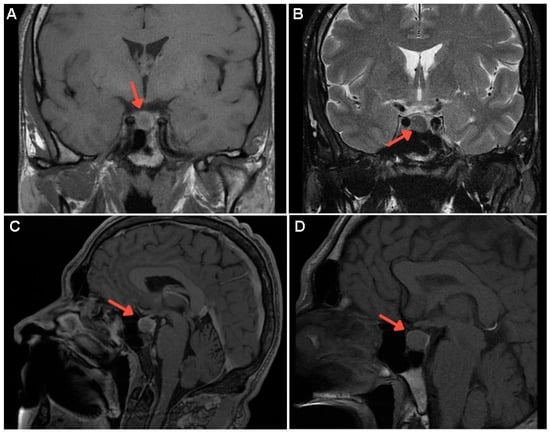
Figure 1
Open AccessArticle
Diabetes Prediction Using Feature Selection Algorithms and Boosting-Based Machine Learning Classifiers
by
Fatima Rahman, Sheyum Hossain, Jun-Jiat Tiang and Abdullah-Al Nahid
Diagnostics 2025, 15(20), 2622; https://doi.org/10.3390/diagnostics15202622 - 17 Oct 2025
Abstract
Background: Diabetes mellitus is a significant primary global health concern that requires accurate diagnosis at an early stage to prevent severe complications. However, accurate prediction remains challenging due to limited, noisy, and imbalanced datasets. This study proposes a novel machine learning framework
[...] Read more.
Background: Diabetes mellitus is a significant primary global health concern that requires accurate diagnosis at an early stage to prevent severe complications. However, accurate prediction remains challenging due to limited, noisy, and imbalanced datasets. This study proposes a novel machine learning framework for improved diabetes prediction, addressing key challenges such as inadequate feature selection, class imbalance, and data preprocessing. Methods: This proposed work systematically evaluates five feature selection algorithms—Recursive Feature Elimination, Grey Wolf Optimizer, Particle Swarm Optimizer, Genetic Algorithm, and Boruta—using cross-validation and SHAP analysis to enhance feature interpretability. Classification is performed using two boosting algorithms: the light gradient boosting machine algorithm (LGBM) and the extreme gradient boosting algorithm (XGBoost). Results: The proposed framework, using the five most important features selected by the Boruta feature selection algorithm, outperformed other configurations with the LightGBM classifier, achieving an accuracy of 85.16%, an F1-score of 85.41%, and a 54.96% reduction in training time. Conclusions: Additionally, we have benchmarked our approach against recent studies and validated its effectiveness on both the Pima Indian Diabetes Dataset and the newly released DiaHealth dataset, demonstrating robust and accurate early diabetes detection across diverse clinical datasets. This approach offers a cost-effective, interpretable, and clinically relevant solution for early diabetes detection by reducing the number of input features, providing transparent feature importance, and achieving high predictive accuracy with efficient model training.
Full article
(This article belongs to the Section Machine Learning and Artificial Intelligence in Diagnostics)
►▼
Show Figures
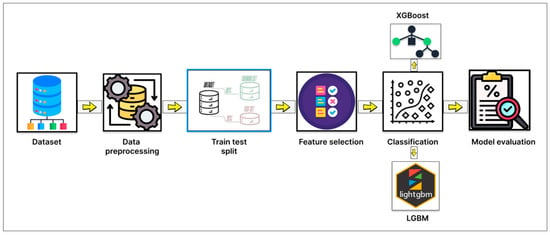
Figure 1
Open AccessInteresting Images
Temporal Triangular Alopecia—Clinical and Dermoscopic Features of a Rare Entity
by
Beata Zagórska, Jakub Żółkiewicz, Urszula Maińska and Martyna Sławińska
Diagnostics 2025, 15(20), 2621; https://doi.org/10.3390/diagnostics15202621 - 17 Oct 2025
Abstract
We present the case of an 18-year-old female patient who attended the Dermatology Outpatient Clinic for a routine total body examination. Clinical evaluation revealed a triangular, non-scarring alopecic patch in the left temporal region, which the patient reported had been present since birth.
[...] Read more.
We present the case of an 18-year-old female patient who attended the Dermatology Outpatient Clinic for a routine total body examination. Clinical evaluation revealed a triangular, non-scarring alopecic patch in the left temporal region, which the patient reported had been present since birth. Based on clinical and trichoscopic findings, a diagnosis of temporal triangular alopecia (TTA) was established. Given the non-progressive nature of the condition and the absence of any impact on quality of life, no treatment was initiated at the patient’s request.
Full article
(This article belongs to the Special Issue Advances in Imaging Diagnosis of Dermatology)
►▼
Show Figures

Figure 1
Open AccessCase Report
Diagnostic Pitfalls of Prosthetic Valve Endocarditis: From Sacroiliitis to Coronary Septic Embolization
by
Camelia Bianca Rus and Corina Cinezan
Diagnostics 2025, 15(20), 2620; https://doi.org/10.3390/diagnostics15202620 - 17 Oct 2025
Abstract
Background: Transcatheter aortic valve implantation (TAVI) is an established treatment for severe aortic stenosis in elderly and high-risk patients. However, prosthetic valve endocarditis (PVE) remains a rare but devastating complication. Its diagnosis is often delayed due to atypical clinical manifestations and the frequent
[...] Read more.
Background: Transcatheter aortic valve implantation (TAVI) is an established treatment for severe aortic stenosis in elderly and high-risk patients. However, prosthetic valve endocarditis (PVE) remains a rare but devastating complication. Its diagnosis is often delayed due to atypical clinical manifestations and the frequent occurrence of culture-negative endocarditis. Case Presentation: We report the case of a 68-year-old woman with a prior TAVI who presented with sacroiliitis, initially interpreted as a localized musculoskeletal infection. Subsequent evaluation revealed infective endocarditis involving the prosthetic aortic valve and the native mitral valve. Blood cultures remained negative, most likely due to prior antibiotic therapy, which complicated timely diagnosis. During hospitalization, the patient developed acute ST-segment elevation myocardial infarction (STEMI), caused by coronary septic embolization. Discussion: Distinguishing septic emboli from thrombotic occlusion in the setting of STEMI complicating endocarditis is extremely challenging but essential, as therapeutic approaches diverge. While percutaneous coronary intervention is the standard treatment for thrombotic occlusion, it carries major risks of septic embolization, including stent infection, mycotic aneurysm, and uncontrolled sepsis. Conclusions: This case highlights the need for high clinical suspicion of PVE in atypical presentations, the diagnostic challenges of culture-negative endocarditis, and the therapeutic dilemmas posed by acute coronary complications without clear guideline-based solutions.
Full article
(This article belongs to the Section Clinical Diagnosis and Prognosis)
►▼
Show Figures
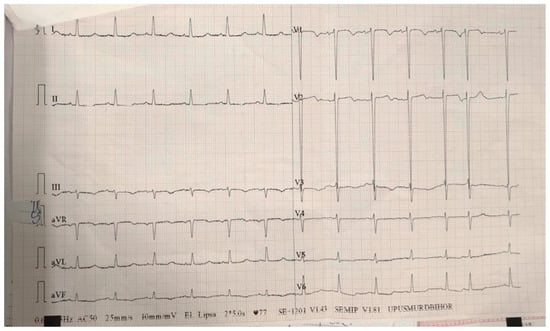
Figure 1
Open AccessArticle
Pixel-Attention W-Shaped Network for Joint Lesion Segmentation and Diabetic Retinopathy Severity Staging
by
Archana Singh, Sushma Jain and Vinay Arora
Diagnostics 2025, 15(20), 2619; https://doi.org/10.3390/diagnostics15202619 - 17 Oct 2025
Abstract
Background: Visual impairment remains a critical public health challenge, and diabetic retinopathy (DR) is a leading cause of preventable blindness worldwide. Early stages of the disease are particularly difficult to identify, as lesions are subtle, expert review is time-consuming, and conventional diagnostic workflows
[...] Read more.
Background: Visual impairment remains a critical public health challenge, and diabetic retinopathy (DR) is a leading cause of preventable blindness worldwide. Early stages of the disease are particularly difficult to identify, as lesions are subtle, expert review is time-consuming, and conventional diagnostic workflows remain subjective. Methods: To address these challenges, we propose a novel Pixel-Attention W-shaped (PAW-Net) deep learning framework that integrates a Lesion-Prior Cross Attention (LPCA) module with a W-shaped encoder–decoder architecture. The LPCA module enhances pixel-level representation of microaneurysms, hemorrhages, and exudates, while the dual-branch W-shaped design jointly performs lesion segmentation and disease severity grading in a single, clinically interpretable pass. The framework has been trained and validated using DDR and a preprocessed Messidor + EyePACS dataset, with APTOS-2019 reserved for external, out-of-distribution evaluation. Results: The proposed PAW-Net framework achieved robust performance across severity levels, with an accuracy of 98.65%, precision of 98.42%, recall (sensitivity) of 98.83%, specificity of 99.12%, F1-score of 98.61%, and a Dice coefficient of 98.61%. Comparative analyses demonstrate consistent improvements over contemporary architectures, particularly in accuracy and F1-score. Conclusions: The PAW-Net framework generates interpretable lesion overlays that facilitate rapid triage and follow-up, exhibits resilience under domain shift, and maintains an efficient computational footprint suitable for telemedicine and mobile deployment.
Full article
(This article belongs to the Section Machine Learning and Artificial Intelligence in Diagnostics)
►▼
Show Figures
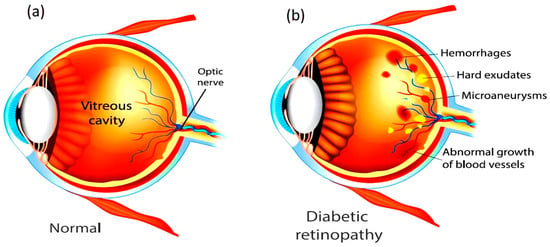
Figure 1
Open AccessArticle
Improving Coronary Artery Disease Diagnosis in Cardiac MRI with Self-Supervised Learning
by
Usman Khalid, Mehmet Kaya and Reda Alhajj
Diagnostics 2025, 15(20), 2618; https://doi.org/10.3390/diagnostics15202618 - 17 Oct 2025
Abstract
The Background/Objectives: The excessive dependence on data annotation, the lack of labeled data, and the substantial expense of data annotation, especially in healthcare, have constrained the efficacy of conventional supervised learning methodologies. Self-supervised learning (SSL) has arisen as a viable option by utilizing
[...] Read more.
The Background/Objectives: The excessive dependence on data annotation, the lack of labeled data, and the substantial expense of data annotation, especially in healthcare, have constrained the efficacy of conventional supervised learning methodologies. Self-supervised learning (SSL) has arisen as a viable option by utilizing unlabeled data via pretext tasks. This paper examines the efficacy of supervised (pseudo-labels) and unsupervised (no pseudo-labels) pretext models in semi-supervised learning (SSL) for the classification of coronary artery disease (CAD) utilizing cardiac MRI data, highlighting performance in scenarios of data scarcity, out-of-distribution (OOD) conditions, and adversarial robustness. Methods: Two datasets, referred to as CAD Cardiac MRI and Ohio State Cardiac MRI Raw Data (OCMR), were utilized to establish three pretext tasks: (i) supervised Gaussian noise addition, (ii) supervised image rotation, and (iii) unsupervised generative reconstruction. These models were evaluated against Simple Framework for Contrastive Learning (SimCLR), a prevalent unsupervised contrastive learning framework. Performance was assessed under three data reduction scenarios (20%, 50%, 70%), out-of-distribution situations, and adversarial attacks utilizing FGSM and PGD, alongside other significant evaluation criteria. Results: The Gaussian noise-based model attained the highest validation accuracy (up to 99.9%) across all data reduction scenarios and exhibited superiority over adversarial perturbations and all other employed measures. The rotation-based model exhibited considerable susceptibility to attacks and diminished accuracy with reduced data. The generative reconstruction model demonstrated moderate efficacy with minimal performance decline. SimCLR exhibited strong performance under standard conditions but shown inferior robustness relative to the Gaussian noise model. Conclusions: Meticulously crafted self-supervised pretext tasks exhibit potential in cardiac MRI classification, showcasing dependable performance and generalizability despite little data. These initial findings underscore SSL’s capacity to create reliable models for safety-critical healthcare applications and encourage more validation across varied datasets and clinical environments.
Full article
(This article belongs to the Special Issue Artificial Intelligence and Deep Learning in Clinical Classification and Prediction)
►▼
Show Figures
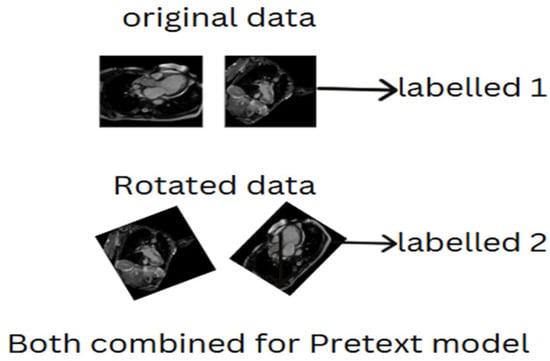
Figure 1
Open AccessArticle
Intra- and Inter-Observer Reliability of ChatGPT-4o in Thyroid Nodule Ultrasound Feature Analysis Based on ACR TI-RADS: An Image-Based Study
by
Ziman Chen, Nonhlanhla Chambara, Shirley Yuk Wah Liu, Tom Chi Man Chow, Carol Man Sze Lai and Michael Tin Cheung Ying
Diagnostics 2025, 15(20), 2617; https://doi.org/10.3390/diagnostics15202617 - 17 Oct 2025
Abstract
Background/Objectives: Advances in large language models like ChatGPT-4o have extended their use to medical image analysis. Accurate assessment of thyroid nodule ultrasound features using ACR TI-RADS is crucial for clinical practice. This study aims to evaluate ChatGPT-4o’s intra-observer consistency and its agreement with
[...] Read more.
Background/Objectives: Advances in large language models like ChatGPT-4o have extended their use to medical image analysis. Accurate assessment of thyroid nodule ultrasound features using ACR TI-RADS is crucial for clinical practice. This study aims to evaluate ChatGPT-4o’s intra-observer consistency and its agreement with an expert in analyzing these features from ultrasound image assessments based on ACR TI-RADS. Methods: This cross-sectional study used ultrasound images from 100 thyroid nodules collected prospectively between May 2019 and August 2021. Ultrasound images were analyzed by ChatGPT-4o, following ACR TI-RADS guidelines, to assess features of thyroid nodule including composition, echogenicity, shape, margin, and echogenic foci. The analysis was repeated after one week to evaluate intra-observer reliability. The ultrasound images were also analyzed by another ultrasound expert for the evaluation of inter-observer reliability. Agreement was measured using Cohen’s Kappa coefficient, and concordance rates were calculated based on alignment with the expert’s reference classifications. Results: Intra-observer agreement for ChatGPT-4o was moderate for composition (Kappa = 0.449) and echogenic foci (Kappa = 0.404), with substantial agreement for echogenicity (Kappa = 0.795). Agreement was notably low for shape (Kappa = −0.051) and margin (Kappa = 0.154). Inter-observer agreement between ChatGPT-4o and the expert was generally low, with Kappa values ranging from −0.006 to 0.238, the highest being for echogenic foci. Overall concordance rates between ChatGPT-4o and expert evaluations ranged from 46.6% to 48.2%, with the highest for shape (65%) and the lowest for echogenicity (29%). Conclusions: ChatGPT-4o showed favorable consistency in assessing some thyroid nodule features in intra-observer analysis, but notable variability in others. Inter-observer comparisons with expert evaluations revealed generally low agreement across all features, despite acceptable concordance for certain imaging characteristics. While promising for specific ultrasound features, ChatGPT-4o’s consistency and accuracy still vary significantly compared to expert assessments.
Full article
(This article belongs to the Section Medical Imaging and Theranostics)
►▼
Show Figures
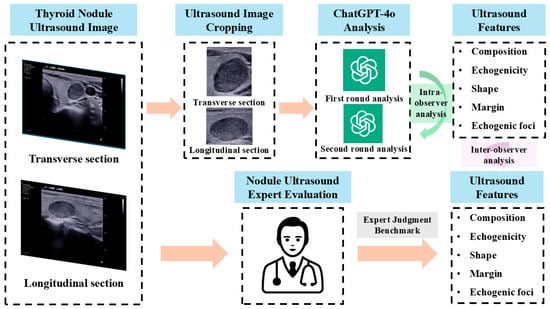
Figure 1
Open AccessSystematic Review
Peripheral Odontogenic Keratocyst of the Gingiva: A Systematic Review of the Literature and Case Report
by
Marta Forte, Alfonso Manfuso, Giuseppe D’Albis, Giulia Cianciotta, Eliano Cascardi, Grazia Pinto, Giuseppe Ingravallo, Gianfranco Favia, Antonio d’Amati, Luisa Limongelli and Saverio Capodiferro
Diagnostics 2025, 15(20), 2616; https://doi.org/10.3390/diagnostics15202616 - 16 Oct 2025
Abstract
Background/Objectives: Odontogenic keratocysts are benign cysts originating from remnants of the dental lamina, rarely showing peripheral (gingival) localization. In this study, we compiled data on the peripheral variant by reviewing the literature and presenting a new case to establish criteria for accurate
[...] Read more.
Background/Objectives: Odontogenic keratocysts are benign cysts originating from remnants of the dental lamina, rarely showing peripheral (gingival) localization. In this study, we compiled data on the peripheral variant by reviewing the literature and presenting a new case to establish criteria for accurate differential diagnosis and treatment. Methods: A systematic literature review was conducted following the PRISMA flowchart, leading to the collection of existing data on peripheral odontogenic keratocyst. In addition, we present a new case of a 68-year-old female patient referred to our attention for an asymptomatic swelling of the mandible in the premolar area. Radiographic examination revealed a round radiolucency with well-defined borders located between teeth #4.3 and #4.4, surgically removed and diagnosed as a peripheral (gingival) keratocyst. Results: Including the herein described new case, 37 cases were reviewed from data literature showing occurrence in the mandible (43.2%) and maxilla (46%)—with 10.8% of cases not stated-, with an age range of 14–83 year old, recurrence rate of 12.5–13.6% (total recurrences/total cases) and median follow-up time of 19 months. Conclusions: Data from literature highlights the rarity of odontogenic keratocyst with peripheral (gingival) localization, which can be misleading for differential diagnosis, emphasizing the necessity of histopathological examination as the definitive diagnostic tool for all the cystic lesions of the jaws. The absence of pathognomonic clinical and radiological features, combined with the potential for extraosseous manifestation of odontogenic lesions with high recurrence rates, underscores the importance of complete excision to ensure proper healing and prevent recurrence of odontogenic keratocyst.
Full article
(This article belongs to the Special Issue Challenges Related to the Oral Cavity, Head and Neck: From Diagnosis to Therapy)
►▼
Show Figures
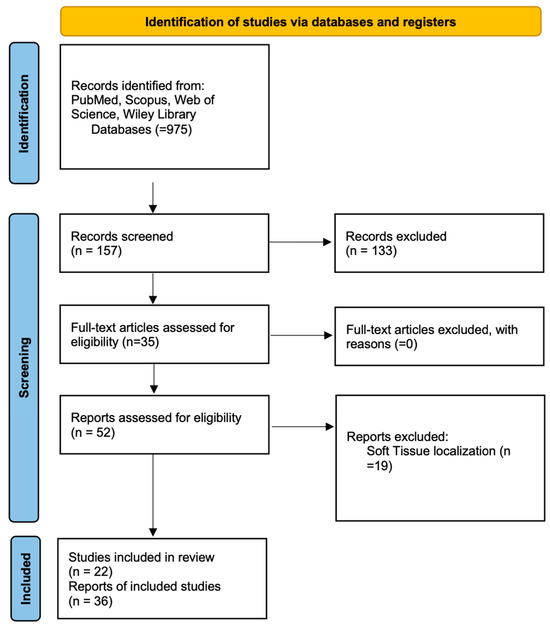
Figure 1
Open AccessArticle
Artificial Intelligence-Aided Tooth Detection and Segmentation on Pediatric Panoramic Radiographs in Mixed Dentition Using a Transfer Learning Approach
by
Serena Incerti Parenti, Giorgio Tsiotas, Alessandro Maglioni, Giulia Lamberti, Andrea Fiordelli, Davide Rossi, Luciano Bononi and Giulio Alessandri-Bonetti
Diagnostics 2025, 15(20), 2615; https://doi.org/10.3390/diagnostics15202615 - 16 Oct 2025
Abstract
Background/Objectives: Accurate identification of deciduous and permanent teeth on panoramic radiographs (PRs) during mixed dentition is fundamental for early detection of eruption disturbances, yet relies heavily on clinician experience due to developmental variability. This study aimed to develop a deep learning model
[...] Read more.
Background/Objectives: Accurate identification of deciduous and permanent teeth on panoramic radiographs (PRs) during mixed dentition is fundamental for early detection of eruption disturbances, yet relies heavily on clinician experience due to developmental variability. This study aimed to develop a deep learning model for automated tooth detection and segmentation in pediatric PRs during mixed dentition. Methods: A retrospective dataset of 250 panoramic radiographs from patients aged 6–13 years was analyzed. A customized YOLOv11-based model was developed using a novel hybrid pre-annotation strategy leveraging transfer learning from 650 publicly available adult radiographs, followed by expert manual refinement. Performance evaluation utilized mean average precision (mAP), F1-score, precision, and recall metrics. Results: The model demonstrated robust performance with mAP0.5 = 0.963 [95%CI: 0.944–0.983] and macro-averaged F1-score = 0.953 [95%CI: 0.922–0.965] for detection. Segmentation achieved mAP0.5 = 0.890 [95%CI: 0.857–0.923]. Stratified analysis revealed excellent performance for permanent teeth (F1 = 0.977) and clinically acceptable accuracy for deciduous teeth (F1 = 0.884). Conclusions: The automated system achieved near-expert accuracy in detecting and segmenting teeth during mixed dentition using an innovative transfer learning approach. This framework establishes reliable infrastructure for AI-assisted diagnostic applications targeting eruption or developmental anomalies, potentially facilitating earlier detection while reducing clinician-dependent variability in mixed dentition evaluation.
Full article
(This article belongs to the Special Issue Advances in Diagnosis and Treatment in Pediatric Dentistry)
►▼
Show Figures
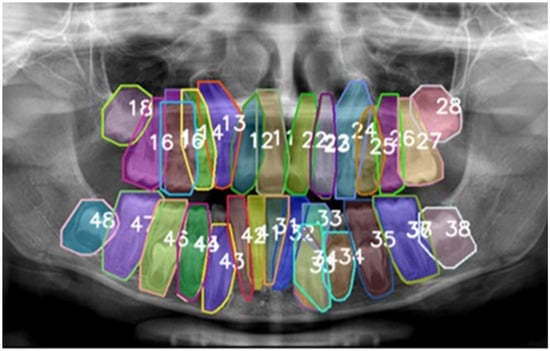
Figure 1
Open AccessReview
Current Concepts of the Applications and Treatment Implications of Drug-Induced Sleep Endoscopy for the Management of Obstructive Sleep Apnoea
by
Chi Ching Joan Wan and Yiu Yan Leung
Diagnostics 2025, 15(20), 2614; https://doi.org/10.3390/diagnostics15202614 - 16 Oct 2025
Abstract
Obstructive sleep apnoea (OSA) is a complex health condition associated with significant health risks and diminished quality of life. Despite continuous positive airway pressure (CPAP) being the gold standard treatment for years, its poor adherence is well documented. With the emergence of drug-induced
[...] Read more.
Obstructive sleep apnoea (OSA) is a complex health condition associated with significant health risks and diminished quality of life. Despite continuous positive airway pressure (CPAP) being the gold standard treatment for years, its poor adherence is well documented. With the emergence of drug-induced sleep endoscopy (DISE) and phenotypic approach to OSA, traditional surgical and non-surgical treatment pathways have been improved to allow personalised treatment and minimising suboptimal treatment to patients demonstrating various upper airway obstruction of OSA endotypes. Sedation protocol propofol, midazolam and dexmedetomidine have been suggested. The VOTE classification for documenting DISE findings have been proposed to unify results across studies. DISE plays an invaluable role in offering insights on treatment successes for positive airway pressure (PAP) therapy, mandibular advancement device (MAD) therapy, positional therapy, and surgical interventions including palatal surgeries, tongue base surgeries, upper airway stimulation (UAS) surgery and maxillomandibular advancement (MMA). This review aims at consolidating current evidence on DISE protocols, indications, and treatment implications to improve therapeutic success in OSA management.
Full article
(This article belongs to the Special Issue Application of Diagnostic Tools for Dentistry and Maxillofacial Surgery)
►▼
Show Figures
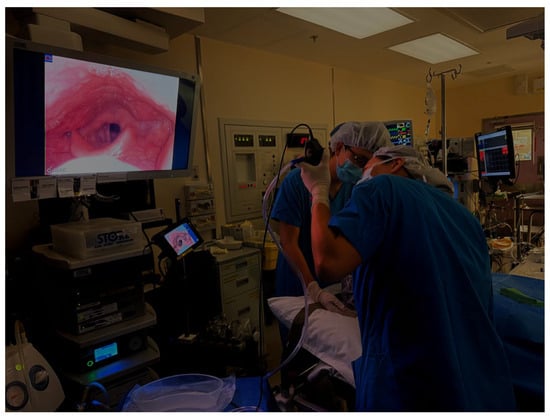
Figure 1
Open AccessSystematic Review
Patterns of Lateral Lymph Node Involvement by Neck Level in cNIb Differentiated Thyroid Carcinoma: A Systematic Review and Meta-Analysis
by
Dana M. Hartl, Karthik N. Rao, Andrés Coca Pelaz, Alessandra Rinaldo, Mark E. Zafereo, Greg W. Randolph, Iain J. Nixon, Marc Hamoir, K. Thomas Robbins, Luiz P. Kowalski, Pia Pace Asciak, Badr Soudi, Juan P. Rodrigo and Alfio Ferlito
Diagnostics 2025, 15(20), 2613; https://doi.org/10.3390/diagnostics15202613 - 16 Oct 2025
Abstract
Background/Objectives: The optimal extent of lateral lymph node dissection in cN1b differentiated thyroid cancer remains controversial. This systematic review aimed to assess the frequency of lymph node involvement across neck levels I to V. Materials and Methods: A systematic review was conducted following
[...] Read more.
Background/Objectives: The optimal extent of lateral lymph node dissection in cN1b differentiated thyroid cancer remains controversial. This systematic review aimed to assess the frequency of lymph node involvement across neck levels I to V. Materials and Methods: A systematic review was conducted following PRISMA guidelines. PubMed was searched for studies on lateral neck dissection in differentiated thyroid cancer. Included studies reported level-specified metastatic rates. Data on patient numbers and metastatic events were extracted. A random-effects meta-analysis with Freeman–Tukey double arcsine transformation was performed for each neck level to calculate pooled prevalence proportions and 95% confidence intervals. Heterogeneity was assessed using the I2 statistic. Results: Meta-analysis of 57 studies revealed that level III (68%, 95% CI: 63–73) and level IV (66%, 95% CI: 61–70) had the highest metastatic prevalence, followed by level IIA (46%, 95% CI: 37–56). Level V demonstrated an overall prevalence of 22% (95% CI: 18–26), with sublevel VB (19%, 95% CI: 11–28) significantly higher than VA (4%, 95% CI: 1–9). Level I (6%, 95% CI: 2–11) and sublevel IIB (14%, 95% CI: 9–20) showed the lowest risk. Significant heterogeneity (I2 71–94%) was observed across all levels. Conclusions: Our findings support sparing level I, and sublevels IIB and VA during lateral neck dissection. Current guidelines recommend systematic dissection of IIA, III, IV, and VB, although VB involvement was found to be only 19% in our study. Future personalization of the extent of neck dissection, based on individual risk factors, may be key to optimizing oncologic and functional outcomes.
Full article
(This article belongs to the Special Issue Advances in Molecular Pathology and Imaging for Precision Diagnosis and Treatment of Tumors)
Open AccessReview
From Fluid Responsiveness to Prognosis: The Emerging Role of Point-of-Care Echocardiography in Sepsis
by
Andrea Piccioni, Gloria Rozzi, Giacomo Spaziani, Michela Novelli, Mariella Fuorlo, Marcello Candelli, Giulia Pignataro, Luca Santarelli, Marcello Covino, Antonio Gasbarrini and Francesco Franceschi
Diagnostics 2025, 15(20), 2612; https://doi.org/10.3390/diagnostics15202612 - 16 Oct 2025
Abstract
Sepsis is a life-threatening condition that requires early recognition and intervention to improve patient outcomes. Optimizing hemodynamic management is crucial, and clinicians must utilize all available tools to guide therapy effectively. Echocardiography is a rapid, non-invasive, and repeatable method that has emerged as
[...] Read more.
Sepsis is a life-threatening condition that requires early recognition and intervention to improve patient outcomes. Optimizing hemodynamic management is crucial, and clinicians must utilize all available tools to guide therapy effectively. Echocardiography is a rapid, non-invasive, and repeatable method that has emerged as a valuable tool in the management of septic patients. Studying its role can provide insights into both therapeutic guidance and prognostic assessment. The primary aim of this review is to highlight the importance of echocardiography in the hemodynamic management of patients with sepsis. The secondary objective is to assess its prognostic value, as echocardiography can inform both the immediate management of critically ill patients and their overall prognosis. A narrative review of the literature published in the last 15 years was conducted using PubMed, and references were managed with Mendeley. Articles focusing on adult and pediatric patients, as well as relevant animal studies, which evaluated echocardiographic assessment of cardiac function, fluid responsiveness, or hemodynamic management were included. Multiple studies demonstrate that echocardiography is a reliable, non-invasive, and easily repeatable tool for assessing fluid responsiveness in septic patients. It allows for dynamic monitoring of stroke volume, VTI, and other hemodynamic parameters, supporting tailored fluid and vasoactive therapy. Additionally, echocardiography provides prognostic insights, with right ventricular dysfunction emerging as a strong predictor of increased mortality. Other parameters, including global longitudinal strain and left ventricular diastolic function, further contribute to risk stratification. Echocardiography is an indispensable tool in the management of sepsis, offering both real-time guidance for hemodynamic optimization and valuable prognostic information. Its routine use can enhance personalized care and improve clinical outcomes in critically ill septic patients.
Full article
(This article belongs to the Section Point-of-Care Diagnostics and Devices)
Open AccessArticle
Outcomes of Transobturator Tape Surgery for Stress and Mixed Urinary Incontinence: A 12-Year Retrospective Review
by
Cheng-Feng Lin, Hung-Yi Chen, Chun-Te Wu, Kuan-Lin Liu, Cheng-Chia Lin, Heng-Jung Hsu, Chin-Chan Lee and Chun-Yu Chen
Diagnostics 2025, 15(20), 2611; https://doi.org/10.3390/diagnostics15202611 - 16 Oct 2025
Abstract
Background: Stress urinary incontinence (SUI) and mixed urinary incontinence (MUI) are common disorders that impair quality of life. While transobturator tension-free vaginal tape (TVT-O) is established for SUI, outcomes in MUI remain uncertain. Methods: We analyzed 111 women who underwent TVT-O
[...] Read more.
Background: Stress urinary incontinence (SUI) and mixed urinary incontinence (MUI) are common disorders that impair quality of life. While transobturator tension-free vaginal tape (TVT-O) is established for SUI, outcomes in MUI remain uncertain. Methods: We analyzed 111 women who underwent TVT-O at Keelung Chang Gung Memorial Hospital. Baseline data included demographics, Overactive Bladder Symptom Score (OABSS), uroflowmetry [peak flow rate (PFR), residual urine (RU)], and Pelvic Organ Prolapse Quantification (POP-Q) stage. The primary outcome was OABSS improvement (≥1-point reduction); secondary outcomes were longitudinal OABSS, uroflowmetry, pad usage, and POP-Q stage. Results: At 3 months, 31.5% (35/111) met responder criteria. Symptom improvement occurred more often in MUI than in SUI, with about half of women with MUI (48.6%) and one quarter of those with SUI (27.4%) reporting subjective improvement (p = 0.018). OABSS improved in MUI (7.92 → 7.18, p = 0.001) but worsened in SUI (6.84 → 7.52, p < 0.001). In SUI, PFR increased (p = 0.001) and RU decreased (p = 0.029); no significant changes occurred in MUI. MUI independently predicted response (OR, 2.59; 95% CI, 1.10–6.14) and greater ΔOABSS (β = −1.391, p < 0.001); higher baseline OABSS also predicted improvement (β = −0.093, p = 0.049). For pad usage, MUI was associated with persistence (OR, 3.855, p = 0.010). ROC analysis showed modest discrimination for MUI (AUC 0.626, p = 0.034). Conclusions: TVT-O provided symptom relief, with about half of the women with MUI, and one quarter of those with SUI experienced subjective improvement. Women with MUI and higher baseline OABSS were more likely to improve, but these findings should be interpreted with caution, given the modest sample size.
Full article
(This article belongs to the Special Issue Clinical Diagnosis and Management in Urology)
►▼
Show Figures
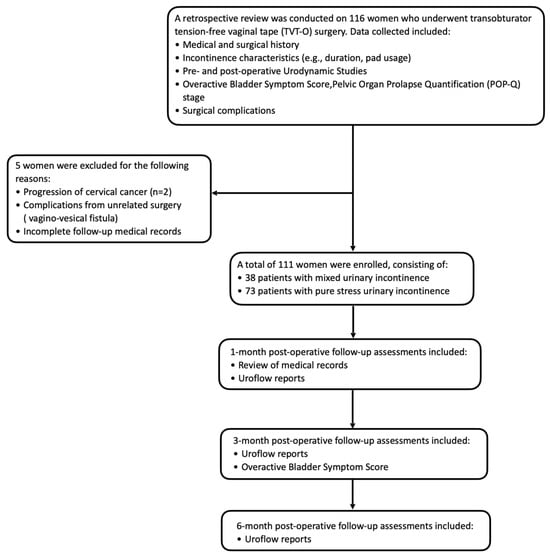
Figure 1
Open AccessArticle
Clinical Application of Machine Learning Models for Early-Stage Chronic Kidney Disease Detection
by
Hasnain Iftikhar, Atef F. Hashem, Moiz Qureshi and Paulo Canas Rodrigues
Diagnostics 2025, 15(20), 2610; https://doi.org/10.3390/diagnostics15202610 - 16 Oct 2025
Abstract
Background/Objectives: Chronic kidney disease (CKD) is a progressive condition that affects the body’s ability to remove waste and regulate fluid and electrolytes. Early detection is crucial for delaying disease progression and initiating timely interventions. Machine learning (ML) techniques have emerged as powerful tools
[...] Read more.
Background/Objectives: Chronic kidney disease (CKD) is a progressive condition that affects the body’s ability to remove waste and regulate fluid and electrolytes. Early detection is crucial for delaying disease progression and initiating timely interventions. Machine learning (ML) techniques have emerged as powerful tools for automating disease diagnosis and prognosis. This study aims to evaluate the predictive performance of individual and ensemble ML algorithms for the early classification of CKD. Methods: A clinically annotated dataset was utilized to categorize patients into CKD and non-CKD groups. The models investigated included Logistic Regression, Linear Discriminant Analysis (LDA), Quadratic Discriminant Analysis (QDA), Ridge Classifier, Naïve Bayes, K-Nearest Neighbors (KNN), Decision Tree (DT), Random Forest (RF), Support Vector Machine (SVM), and Ensemble learning strategies. A systematic preprocessing pipeline was implemented, and model performance was assessed using accuracy, precision, recall, F1 score, and area under the receiver operating characteristic curve (AUC). Results: The empirical findings reveal that ML-based classifiers achieved high predictive accuracy in CKD detection. Ensemble learning methods outperformed individual models in terms of robustness and generalization, indicating their potential in clinical decision-making contexts. Conclusions: The study demonstrates the efficacy of ML-based frameworks for early CKD prediction, offering a scalable, interpretable, and accurate clinical decision support approach. The proposed methodology supports timely diagnosis and can assist healthcare professionals in improving patient outcomes.
Full article
(This article belongs to the Special Issue Machine-Learning-Based Disease Diagnosis and Prediction)
►▼
Show Figures
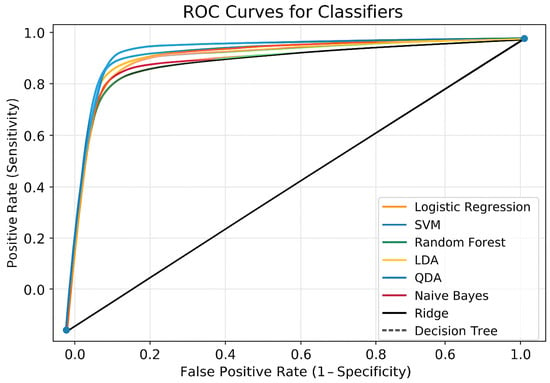
Figure 1

Journal Menu
► ▼ Journal Menu-
- Diagnostics Home
- Aims & Scope
- Editorial Board
- Reviewer Board
- Topical Advisory Panel
- Instructions for Authors
- Special Issues
- Topics
- Sections & Collections
- Article Processing Charge
- Indexing & Archiving
- Editor’s Choice Articles
- Most Cited & Viewed
- Journal Statistics
- Journal History
- Journal Awards
- Society Collaborations
- Conferences
- Editorial Office
Journal Browser
► ▼ Journal BrowserHighly Accessed Articles
Latest Books
E-Mail Alert
News
Topics
Topic in
Biomedicines, Cancers, Current Oncology, Diagnostics, JCM
Advances in Magnetic Resonance Imaging (MRI) and Its Role in Radiation Therapy
Topic Editors: Indra J. Das, Minsong CaoDeadline: 31 October 2025
Topic in
AI, Algorithms, Diagnostics, Emergency Care and Medicine
Trends of Artificial Intelligence in Emergency and Critical Care Medicine
Topic Editors: Zhongheng Zhang, Yucai Hong, Wei ShaoDeadline: 30 November 2025
Topic in
Biophysica, CIMB, Diagnostics, IJMS, IJTM
Molecular Radiobiology of Protons Compared to Other Low Linear Energy Transfer (LET) Radiation
Topic Editors: Francis Cucinotta, Jacob RaberDeadline: 20 December 2025
Topic in
BioMed, Cancers, Diagnostics, JCM, J. Imaging
Machine Learning and Deep Learning in Medical Imaging
Topic Editors: Rafał Obuchowicz, Michał Strzelecki, Adam Piórkowski, Karolina NurzynskaDeadline: 31 December 2025

Conferences
Special Issues
Special Issue in
Diagnostics
Nuclear Medicine and Molecular Imaging in Cancer Diagnosis, Therapy, and Treatment Assessment
Guest Editor: Sara HarsiniDeadline: 30 October 2025
Special Issue in
Diagnostics
Deep Learning and Multimodal Feature Fusion for Advanced Medical Imaging Diagnosis
Guest Editors: Sarmad Maqsood, Rytis MaskeliūnasDeadline: 30 October 2025
Special Issue in
Diagnostics
Deep Learning in Medical Imaging: Challenges and Opportunities
Guest Editor: Morten Bo Søndergaard SvendsenDeadline: 30 October 2025
Special Issue in
Diagnostics
Diagnosis, Prognosis and Management of Hematologic Malignancies
Guest Editors: Rossella Cacciola, Emma C. Cacciola, Alessandra Romano, Alessandro AllegraDeadline: 31 October 2025
Topical Collections
Topical Collection in
Diagnostics
Virus Diagnostic Methods and Techniques: Learning from the COVID-19 Global Outbreak
Collection Editors: Chao-Min Cheng, Sandeep K. Vashist, Carmen de Mendoza
Topical Collection in
Diagnostics
Diagnostic Sensors
Collection Editors: Xavier Muñoz-Berbel, Michele Dei, Miguel A. Pellitero







